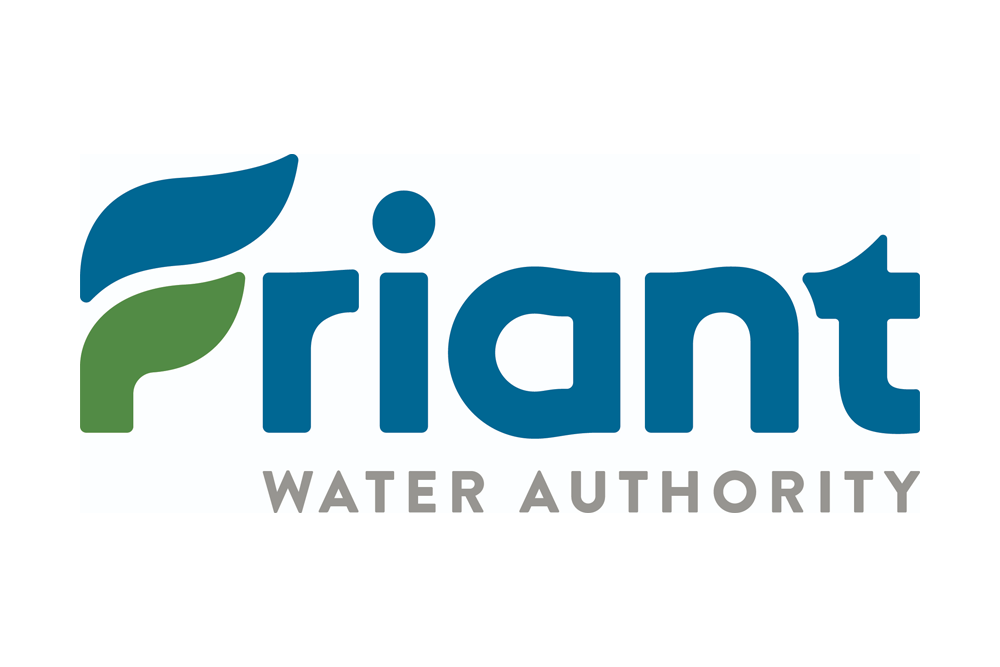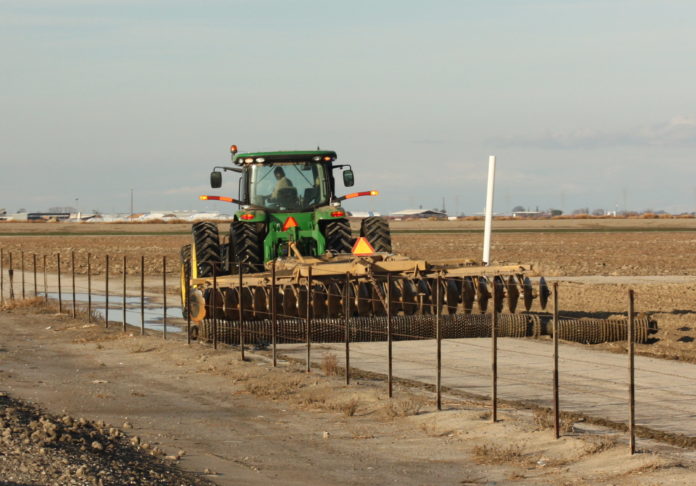The Tulare Irrigation District held its board of directors meeting on Tuesday, June 11, 2024 on Zoom and in person. For those of you new to these reports it’s important you’re aware of some things of concern when attending a TID meeting in person. They are not above luring you into a false sense of security with some outstanding breakfast burritos. The linguica and egg is delicious but like all eggs it needs a dash of Tabasco sauce.
One morning there wasn’t any of that good Louisiana product available so I applied some sauce from a bottle named “Dave’s Death Sauce”*. We’re not talking about cayenne or tabasco or jalapeno – this stuff is made from habanero chilis and maybe something even more sinister like ghost peppers. Whatever it was you only need a little and even then I found my nose sweating and eventually my muzzle mercifully went numb. Also, bonus hint – when using high powered hot sauce be sure and wash your hands both before and after visiting the restroom.
The Meeting
Things began swimmingly at 9:02am with Chairman Dave Bixler calling things to order. General Manager Aaron Fukuda asked for public comment and there wasn’t any. There were also no changes or additions to the agenda and last month’s minutes were approved without comment.
Water Report
Water Master Marco Crenshaw reported there was a controlled spill at Lake Kaweah at 2-cubic feet per second. Inflow at Terminus Dam is 1,535cfs and outflow is 1,757cfs. TID is getting 775 cfs off the Kaweah and San Joaquin Rivers. The San Joaquin River water coming from the Friant Kern Canal.
Fukuda said this year has been unusual with rapidly changing operating decisions coming from the US Bureau of Reclamation. I believe it was Director Dave Martin who asked if the Marx Brothers were running things. Fukuda explained this is possibly the most “normal” or “average” of any year on record. California has an average but that is made up of wet and dry years – we don’t really have a normal – but this year’s trends are following what would be a normal year. Almost all of the reservoirs in California are full but save San Luis Reservoir due to pumping restrictions in the Delta.
Fukuda said the way storage works at Millerton Lake is this – TID has a high flow space. There are years when TID gets more, earlier or more, later depending on space. He said in the long run TID growers get better supplies on the allocation system and he needs to do a better job of explaining how this works. He also said the summer irrigation rate is $52 per acre foot.
Forecasts from Crenshaw and Fukuda show under the 215 Election result the district could charge $55 per a/f. Fukuda said he budgeted at $52 but the district also needs a new backhoe. This year’s irrigation run is expected to be shorter. Financially it appeared a modest increase would be helpful but he left it in the hands of the board to pull that trigger. They are all farmers too. After much soul searching the board directed staff to hold the line.
O&M Report
Superintendent Wayne Fox said crews are removing trash from the racks and that is starting to dissipate in volume. Here’s some insanity for you. Fukuda said under Fox’s management the district is staying ahead of the clean air regulations. However, thanks to the smog nazis TID’s fleet is going to have to include 50 percent electric vehicles this year for anything over 8,500 lbs. It will have to be 100 percent by 2027. How’s that grab you? Anything one ton or bigger pretty much. That portion of the district’s fleet – like the F250s and bigger need replacing. But, Fukuda said they don’t want to replace the trucks with electric because there aren’t plug ins along a canal bank and that size vehicle needs massive batteries. I think it was Martin who suggested installing a gas powered generator on all the electric trucks.
management the district is staying ahead of the clean air regulations. However, thanks to the smog nazis TID’s fleet is going to have to include 50 percent electric vehicles this year for anything over 8,500 lbs. It will have to be 100 percent by 2027. How’s that grab you? Anything one ton or bigger pretty much. That portion of the district’s fleet – like the F250s and bigger need replacing. But, Fukuda said they don’t want to replace the trucks with electric because there aren’t plug ins along a canal bank and that size vehicle needs massive batteries. I think it was Martin who suggested installing a gas powered generator on all the electric trucks.
The California Air Resources Board has a $10,000 per day fine attached to this. In 2022 CARB vacuumed up $21.5 million in fines from 8,293 citations. One possible option is to accelerate the management fleet – the smaller, lower milage, non-heavy duty vehicles to help offset some of the CARB revenge against the citizens. Part of the problem is there will be a run on electric trucks and the dealership doesn’t make money on the bigger rigs so there is good reason to expect a cluster roll out of this new regulatory scheme as the electric vehicles won’t be available. Wouldn’t that be something? If the unelected CARB was told, “No, we’re not going along with your insanity,”? There isn’t the generation or transmission or infrastructure capabilities to fuel your wishful thinking and we’re not going to bankrupt our society to achieve a scenario where the elite can virtue signal an infinitesimal contribution to manufactured climate crisis best epitomized by a Swedish teenager.
there is good reason to expect a cluster roll out of this new regulatory scheme as the electric vehicles won’t be available. Wouldn’t that be something? If the unelected CARB was told, “No, we’re not going along with your insanity,”? There isn’t the generation or transmission or infrastructure capabilities to fuel your wishful thinking and we’re not going to bankrupt our society to achieve a scenario where the elite can virtue signal an infinitesimal contribution to manufactured climate crisis best epitomized by a Swedish teenager.
Next the board looked at backhoes and selected a John Deere. Good for them.
Financial Reports
Controller Kathi Artis laid out a series of spreadsheets detailing the financial going on of TID over the past month. Artis went over income, expense, investments and paying the bills. I’ve written this so many times but it still remains a fact – farmers don’t play. There is very little wiggle on the books at any farmer run special district. It’s not that they are tight, rather they are frugal. You can’t farm successfully if you don’t manage your assets and money closely. Artis has been providing TID with top notch accounting for many years and has a reputation for honesty and accuracy. The board approved her reports and paying the bills.
SGMA
Next Fukuda spoke about the Sustainable Groundwater Management Act and the needs for a new Groundwater Sustainability Plan to present to the State Water Resources Control Board least the Kaweah Subbasin fall into its probationary clutches.
Fukuda said an undesirable result would be more than 30 domestic wells and/or 17 upper aquifer monitoring wells exceed their minimum threshold in a water year. It is estimated 350 domestic wells would be 10-percent of the total drinking water wells in the subbasin. He said there was a dry well susceptibility analysis run by modeling and the total number of impacted wells was dramatically lowered to trigger undesirable results. There is an agreement with the Cities of Tulare and Visalia should a domestic well go dry in their sphere the cities will pay for mitigation. If it’s cheaper to connect the household to the city’s system or drill a new well, which ever is more cost friendly.
an agreement with the Cities of Tulare and Visalia should a domestic well go dry in their sphere the cities will pay for mitigation. If it’s cheaper to connect the household to the city’s system or drill a new well, which ever is more cost friendly.
The minimum thresholds were revisited along with the mitigation program. Fukuda said Self Help Enterprises has proven an amazing partner that knows the space and can respond. He said they know different well problems. He said his home had a well problem but it was due to the casing and not a drop in water levels. Self Help is helping to provide a 24-hour emergency response and a 72-hour interim supply with larger tanks. Water quality testing and treatment is included. Fukuda said costs are also going down as the actions are refined. For instance, bottled water can be stored at TID and Self Help won’t have to travel and transport supplies from Visalia.
The Subbasin applied for a Bureau grant but was denied because the problem hasn’t occurred yet. The Bureau knows this is a less than ideal you might say response but it’s the laws and not the messenger in this case. Fukuda said it is penciling out to be cheaper to make a disadvantaged community resilient than to mitigate a problem. Also, even though DACs are addressed there is no income qualifier for help with domestic wells.
even though DACs are addressed there is no income qualifier for help with domestic wells.
Land subsidence is a problem and since it is permanent any new subsidence will trigger an undesirable result under the new GSP. This has been coordinated across all three Groundwater Sustainability Agencies within the subbasin.
Groundwater levels tie in with subsidence. If the levels drop below the minimum thresholds and subsidence occurs there’s the problem.
All in all the engineering firm Montgomery Associates and Stanford University have developed a model. There have been 97 predictive runs of this computer model and it shows sustainability by 2040 in complete compliance with SGMA. It takes into consideration demand management (cut backs of surface supplies and pumping), reliable projects such as recharge and even possible climate change. Fukuda said this compliance required more than 200,000 a/f cut back and only 150,000 a/f are imported supplies. His goal is to not only meet sustainability but increase allowed pumping. This will require reducing overdraft to zero which makes anything below zero surplus. It’s a bit counter intuitive.
as recharge and even possible climate change. Fukuda said this compliance required more than 200,000 a/f cut back and only 150,000 a/f are imported supplies. His goal is to not only meet sustainability but increase allowed pumping. This will require reducing overdraft to zero which makes anything below zero surplus. It’s a bit counter intuitive.
Fukuda said originally Montgomery expected to make three model runs until they realized how much SGMA was up against. It takes 48-hours** to run the model. It’s quite a deal to do this because there are so many variables.
A revised draft of the GSP will be available for review on June 13th and the public comment period ends July 15th. The State Board will add its comments and by August it is planned to have them addressed. Fukuda said the State Board staff has been open and cooperative so far.
On June 13th at 1:00pm there will be a joint board meeting of all three GSAs in the Kaweah Subbasin at the Tulare County Ag Commissioners office in Tulare across the street from the World Ag Expo. Also, on June 24th and 27th Provost & Pritchard will hold workshops for the public. And, on November 5th at 9:00am there will be the Probation hearing presentation before the State Board in Sacramento. This afternoon’s Mid Kaweah GSA meeting was cancelled because of the joint meeting.
Friant & Other Matters
TID is a Central Valley Project contractor and gets supplies from the Friant Kern Canal. There is subsidence issues along the canal of grave conditions and most of that is happening in the Tule Subbasin and some in the Kern Subbasin. A new canal was installed alongside the old one and there will be a ribbon cutting ceremony on June 21st.
A drought pool is being developed and TID has a couple of thousand acre feet in San Luis Reservoir that will be ideal for this.
TID is working on the McKay Point Reservoir and the Seaborn Reservoir. Design is moving along as is grant funding opportunities.
AB 2079 is still out there and Fukuda said you can’t amend this mess of a proposed law out of the problem zone so there is still a massive amount of opposition to it. The author Ventura County Assemblyman Steve Bennett poisoned the well last year with intractability for an earlier version of this well. He and his staff just weren’t willing to entertain any compromises even though the language included impossible conditions as criteria for a well permit.
On June 27th there will be at 11:00am a ribbon cutting ceremony for the Okieville Recharge Facility.
Well, it’s once again budget review time. Fukuda said the income is ticking up. He credits SGMA incentivizing more surface purchases, and of course two years with surface supplies in a row helped. Over all income is exceeding estimates by 30 percent. Expenses are 14-percent above estimates but that may even out a little more before it’s over. They need to spend about million dollars more on the Okieville facility but that will be covered by a grant. Of course, it’s going to take a year to get the check from the state. The board approved the revised budget. Also, the Water Education Foundation and the Cultivate California efforts are politely asking for funds and the board agreed. Fukuda liked both of the programs. He said Cultivate California has lost some of its support and he said that has to change because it is unique, valuable and impactful. The board agreed to give TID’s support financially. Martin said he hopes the outreach is reaching elementary age children before they are led astray. Director Rick Borba put in a good word too.
Board Reports & Closed Session
Martin said there was spilling on the both the Kaweah and St. Johns Rivers and there is a need for more monitoring at McKay Point. The KSJR Association is looking at paying for it. There are drone flights scheduled that TID may want to get involved in. That was about it for board reports.
Closed session began at 11:25am. A relatively short open session for TID. I saw the budget review agenda and expected a marathon but I was delivered, thankfully. The board went into closed session to wrestle philosophically with two cases of existing litigation, two cases of anticipated litigation, some employee negotiations and a couple of liability claims.
That was that from TID this month. Go be good to each other and yourselves.
DISCLAIMER OF RESPONSIBILITY; Waterwrights strives to provide clients with the most complete, up-to-date, and accurate information available. Nevertheless, Waterwrights does not serve as a guarantor of the accuracy or completeness of the information provided, and specifically disclaims any and all responsibility for information that is not accurate, up-to-date, or complete. Waterwrights’ clients therefore rely on the accuracy, completeness and timeliness of information from Waterwrights entirely at their own risk. The opinions expressed in this report are those of the author and do not represent any advertisers or third parties.
ALL RIGHTS RESERVED. Copyright 2024 by WaterWrights.net/DAW
*No known relation to Director Martin.
**Punch cards, Super Cray?
TULARE IRRIGATION DISTRICT
6826 Ave 240, Tulare, CA 93274 Office: 559/686-3425
Board: David G. Bixler- President, Richard S. Borges, Jr.-Vice President, Scott Rogers, Dave Martin & Michael Thomas
Staff: Aaron Fukuda-General Manager, Kathi Artis–District Controller, Wayne Fox–Superintendent, Marco Crenshaw–District Watermaster & Alex Peltzer-Attorney.
About: The Tulare Irrigation District was organized September 21, 1889. The original proposal for the formation of an irrigation district covering 219,000 acres, extending from the Sierra Nevada foothills to Tulare Lake, was eventually reduced to 32,500 acres. The District continued in this status until January of 1948 when the so-called Kaweah Lands” (approximately 11,000 acres) were annexed. In October of 1948, approximately 31,000 acres, compromising the area served by the Packwood Canal Company were annexed to the District. A U.S. Bureau of Reclamation contract was signed in 1950 providing an annual supply of 30,000 acre-feet of Class 1 water, and up to 141,000 acre-feet of Class 2 water from the Friant-Kern Canal. The District and the Kaweah Delta Water Conservation District have coordinated efforts to enhance the recharge of groundwater within the Kaweah Basin. During high flow times KDWCD may use the recharge basins with the District for recharge purposes. Further, KDWCD has historically provided for a financial incentive program through which the District sustains the level of groundwater recharge from supply sources into the District. This historical program was recently reinstated by both districts in lieu of the District’s plans to concrete-line this canal to conserve the surface water. TID is a member of the Mid Kaweah GSA DWR#-5-022.11




































